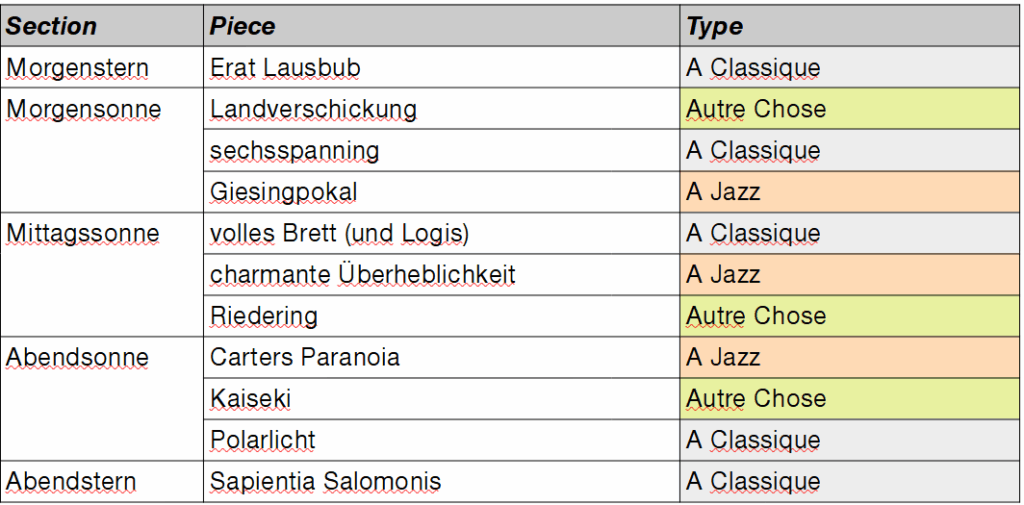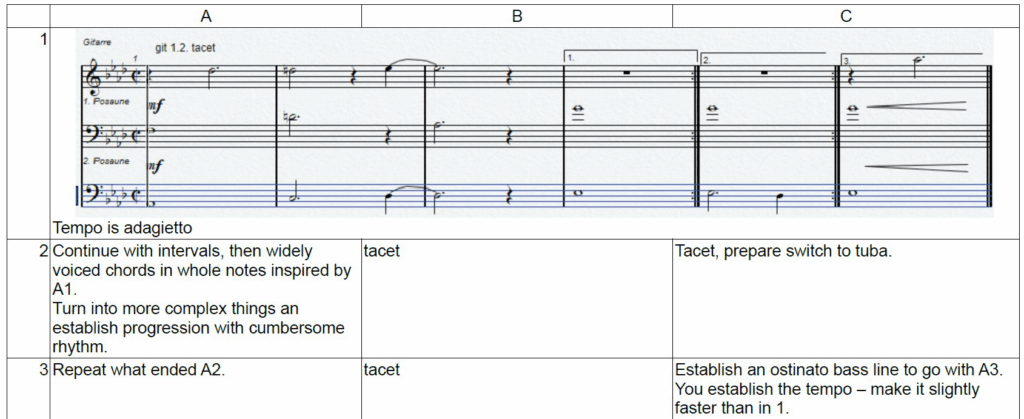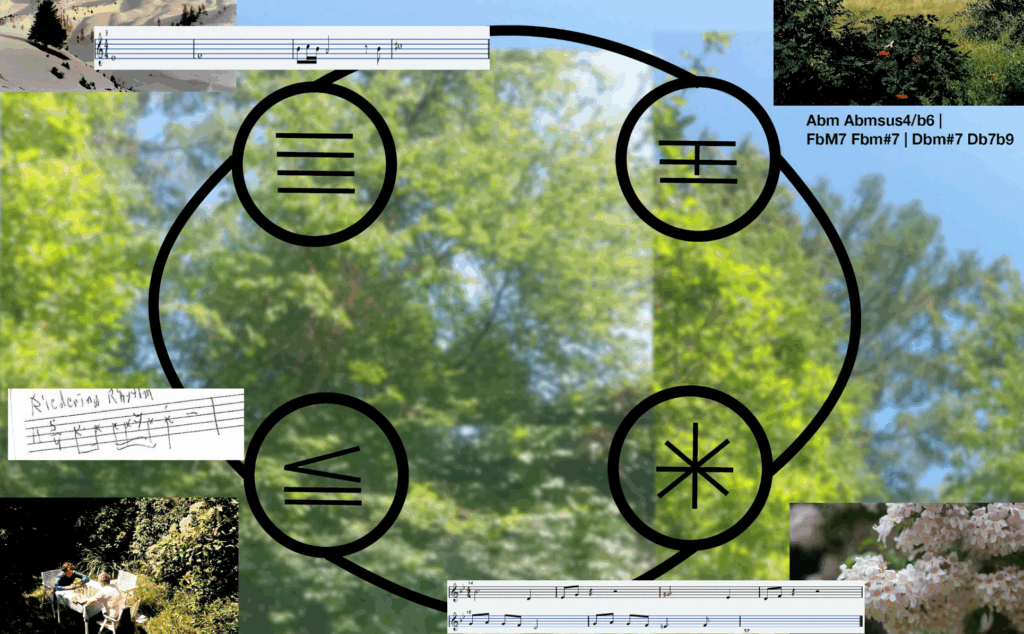This post is quoted from the formal project specification document „Max – Music Specification“ in its version dating 23.12.24.
Different Types of Compositions
Max contains three different kinds of compositions. The difference lies in what the composer specifices vs. what is left to the interpretation of the performers.
A Classique
(or “notated”). In those, the composition specifies the structure completely and its actual content (“actual notes”) completely or to a large degree.
A Classique compositions may contain improvised or freely specified portions, such as:
- chordal playing (“top continuo part”) specified by top voice or rhythm markings and chord symbols,
- free interpretation of notated passage, specified by use of grace notes,
- improvised sections, specified by “improvisazione super (rehersal marking reference for theme to potentially use as inspiration source) and rhythm markings to delineate start and end of improvised section.
A Classique compositions have a rather precise duration, implied by sensible use of provided tempo markings.
A Jazz
(or “lead sheet”). Those may contain as little as a melody plus chord progression, or a melody plus bass line. There can be as little or as much as in your typical fake book (e.g. Real Book).
Additional content may be:
- sketched out prelude and/or coda,
- scales for improvised sections,
- form and structure guidance.
Autre Chose
This is a catchall for everything that is neither A Classique nor A Jazz.
This may include:
- Fully graphical notation,
- Message Sequence Charts,
- Game Pieces.
These compositions may or may not provide detailed text description (“how to read it”). Within those compositions, you may find pieces of traditional notation. Unless specifically told to play them “as is”, interpret them as you like. If there’s a melody, maybe play it backwards. Or turn it into a chord progression and play the roots. Or convert pitches into a sequence of integers and use them to somehow create a rhythm. You get the idea.
Overview Pieces vs. Types

Commented Examples
A Classique

Improvised section referencing a rehearsal marking.

Rehearsal marking (“I”), tempo marking (“allegro”) and loudness specification (“fortissimo
possible”, i.e. really loud).
A Jazz

Head with classical tempo markings, melody, chord symbols and bass voice.

Specifications and suggestions on form in text on lead sheed (sic!).

Example of an “A Jazz” composition with substantial amount of supportive text information.
Autre Chose

In this case, individual sections with both traditional notation and text description.

This is it. No further explanation is given.
